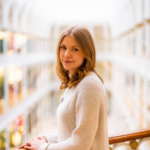This time of year the days are short, wet and cold and there aren’t as many insects for me to investigate. So I thought I’d use this time to share with you some of my entomological highlights of 2017. You see, I’ve been thinking a lot about bees. I’m fascinated by all insects, with my main focus usually being beetles. Last year though, I decided it was time to become better acquainted with bees.
Most people are familiar with the Western honeybee, Apis mellifera, and perhaps a handful of bumblebees, but are generally unaware of the diversity of bees we have in the UK. In fact, there are around 270 different bee species! Over 240 of these are solitary (i.e. are not social and do not live in colonies) and they are vital pollinators. Learning to recognise the different species, as with any insect group, can take a substantial amount of time and practice.
In July, I attended an identification workshop for bees and hoverflies led by entomologist Steven Falk in the idyllic village of Ashbury, Oxfordshire. During the course we were given an introduction to British bees via indoor sessions, examining specimens under the microscope and working our way through identification keys, and outdoor sessions where we could find and observe live bees.
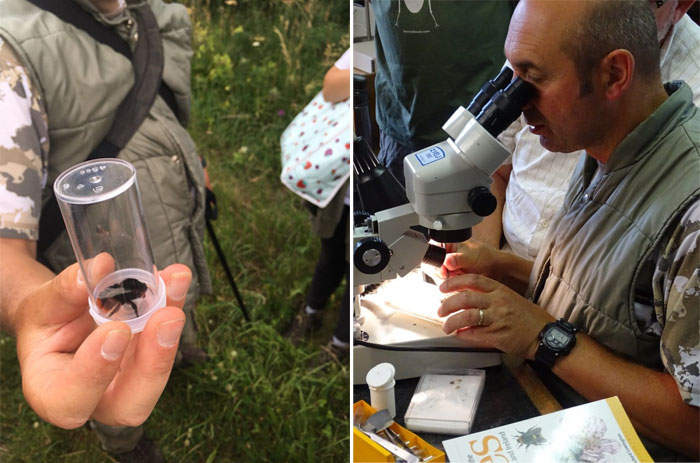
Part of the course involved capturing bees in order to examine live specimens more closely. Steven is a pro at this and even helps attendees to build up their handling confidence by stroking bumblebees! Do not panic, this didn’t harm the bees and nobody was stung because all the bees handled were males and the males do not possess a sting. Unfortunately, not all bee identification can be done in the field; often a specimen and a microscope are required. In fact, for many species external features alone won’t do the job and the genitalia must be examined. With steady hands Steven demonstrated his dissection technique, an essential skill for accurate species identification.
For me, one of the highlights of the workshop was seeing a solitary bee known as the Four Banded Flower Bee (Anthophora quadrimaculata). This was a special moment as the species is considered to be nationally scarce, confined to southern England. It was spotted darting back and forth on a patch of lavender and only when it stopped to roost, did I manage to get a photo of it.
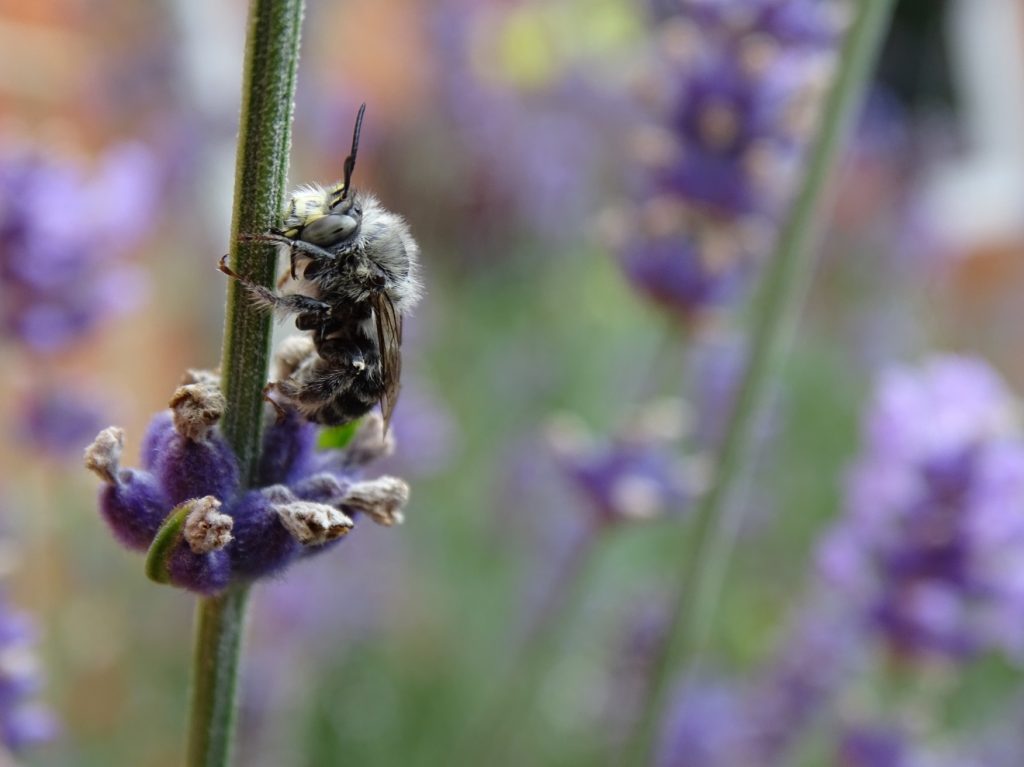
Back in Edinburgh, armed with my new identification skills, I was delighted to see Wool Carder bees at the Royal Botanic Gardens. I watched several territorial males darting back and forth across a patch of Lamb’s Ear (Stachys byzantina). The females gather hairs from the furry leaves and use them for constructing their nests.
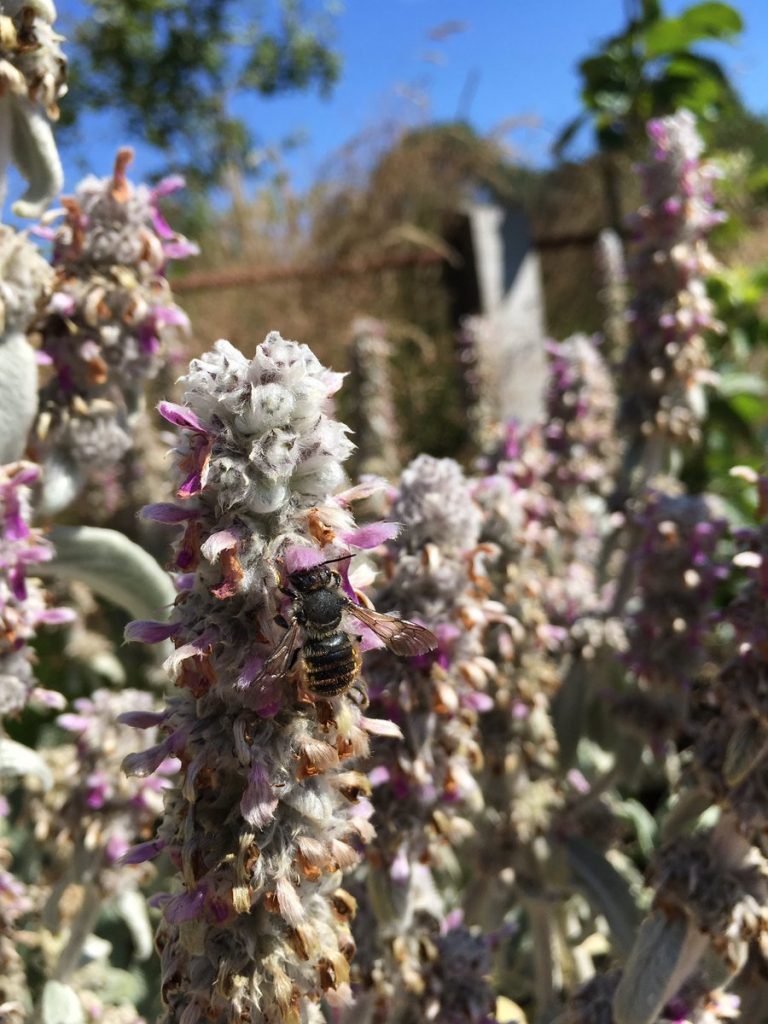
At the National Museums Collection Centre we were fortunate to have several visits by David Notton, senior curator of Hymenoptera at the Natural History Museum, London, who noticed that we have leafcutter bees on the site, the Patchwork Leafcutter bee (Megachile centuncularis). These have powerful jaws which they use to remove chunks of leaves for nest construction.
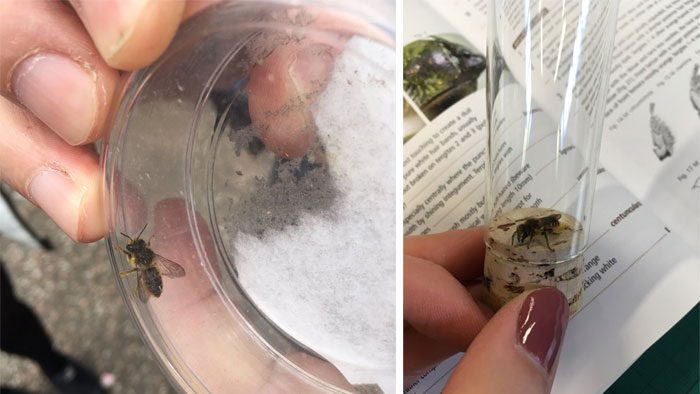
A Patchwork Leafcutter bee (Megachile centuncularis) found at the National Museums Collection Centre.
But my bee highlight occurred during August on a fieldwork trip to Orkney, when I saw a Great Yellow Bumblebee, Bombus distinguendus. This is one of the UK’s rarest bumblebees, which has faced a decline of 80% in the last century. Once found across the UK, it is now restricted to Northern Scotland (Caithness, the Uists and Orkney) where it is sustained by flower-rich machair. I spotted this one at the Ring of Brodgar, on route to one of our sampling sites. It was a male, indicated by the shape of the abdomen, coupled with long antenna and a golden moustache – so no chance of being stung!
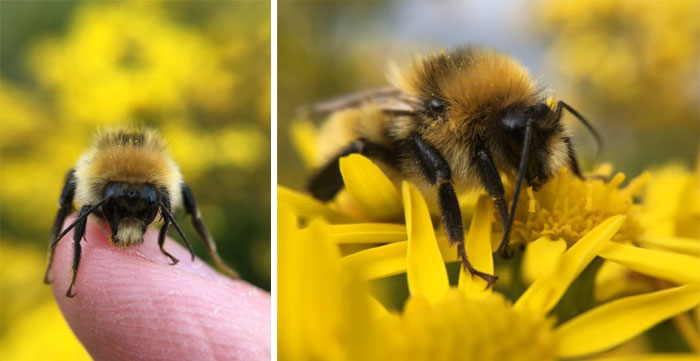
In the collection we have approximately 5,500 British bumblebees, with the oldest specimens dating back to the 1800s. These are predominantly used as an identification resource by local entomologists and students but are also available to researchers. The collection is currently being used by researchers from Imperial College London to facilitate their work investigating insect pollinator declines. More news on this as the project develops…!
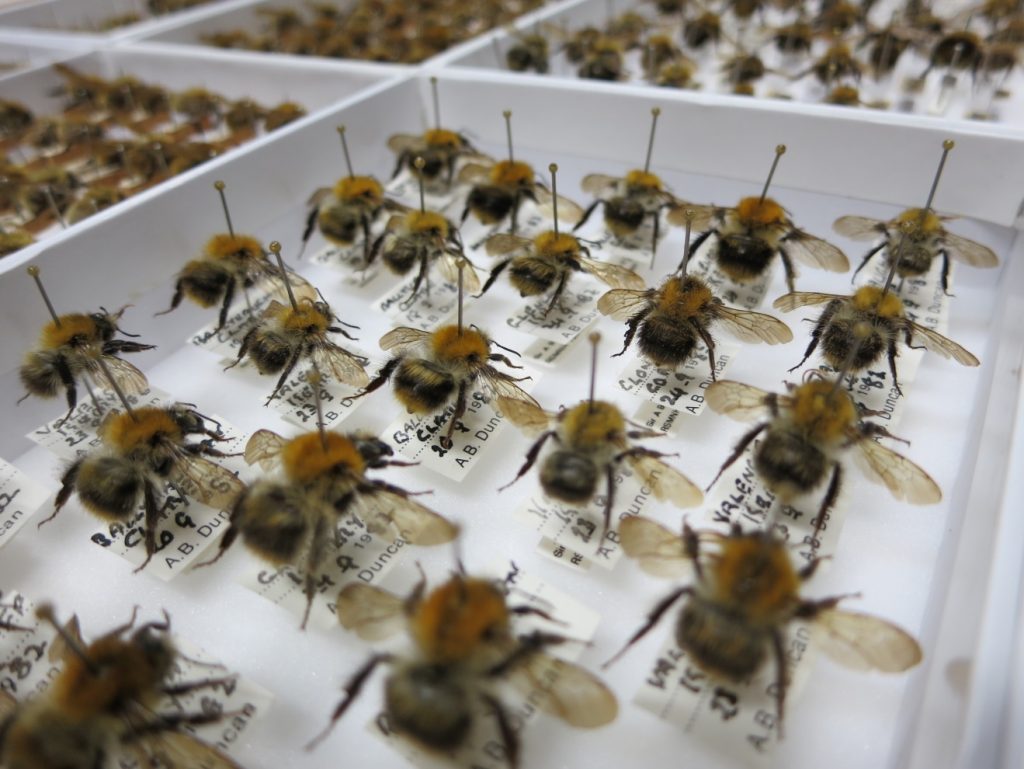
If you would also like to develop your identification skills with bees there are some great resources available online to get you started, including the Bees, Wasps and Ants Recording Society, the Bumblebee Conservation Trust and the Great British Bee Count just to name a few). There’s also Steven Falk’s Flickr site – a virtual reference collection, containing hundreds of photos of British bees.
